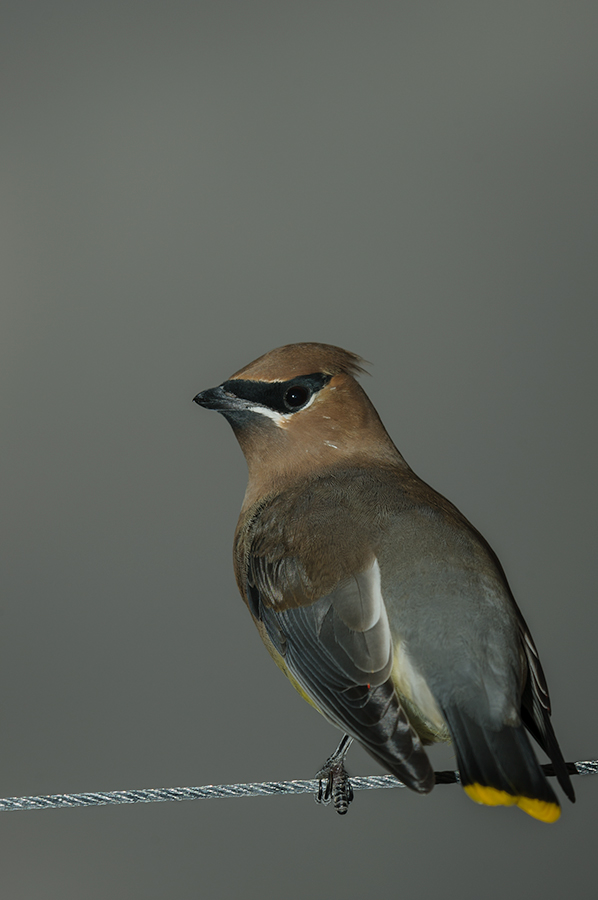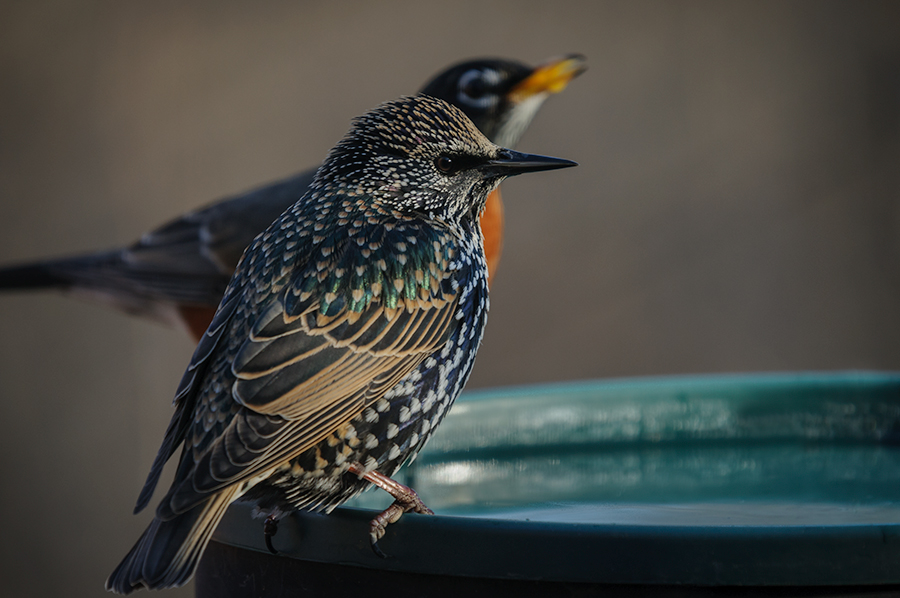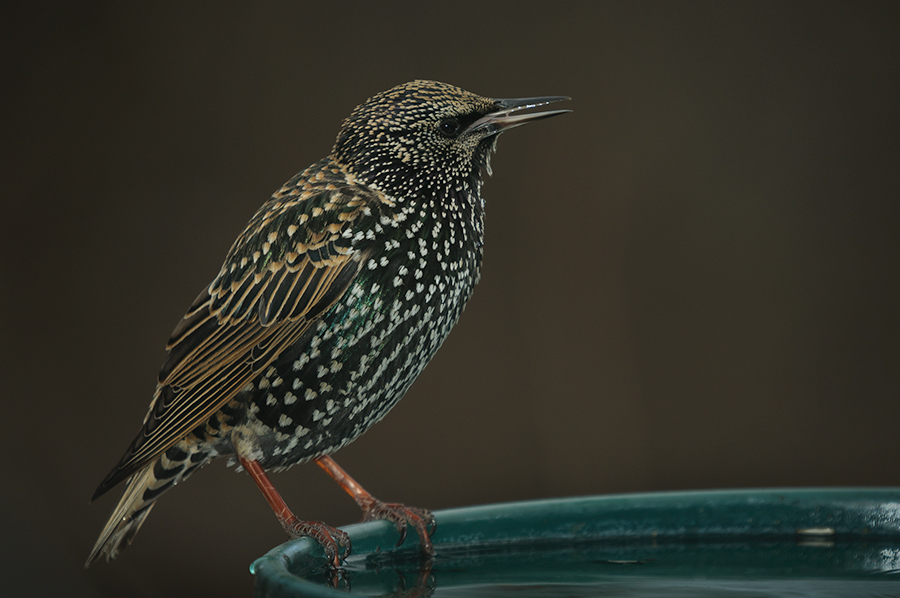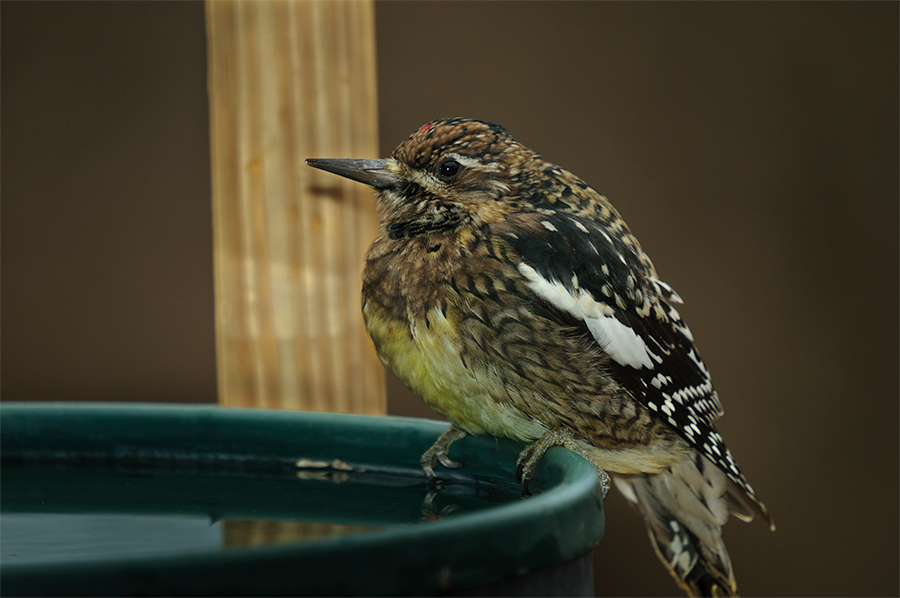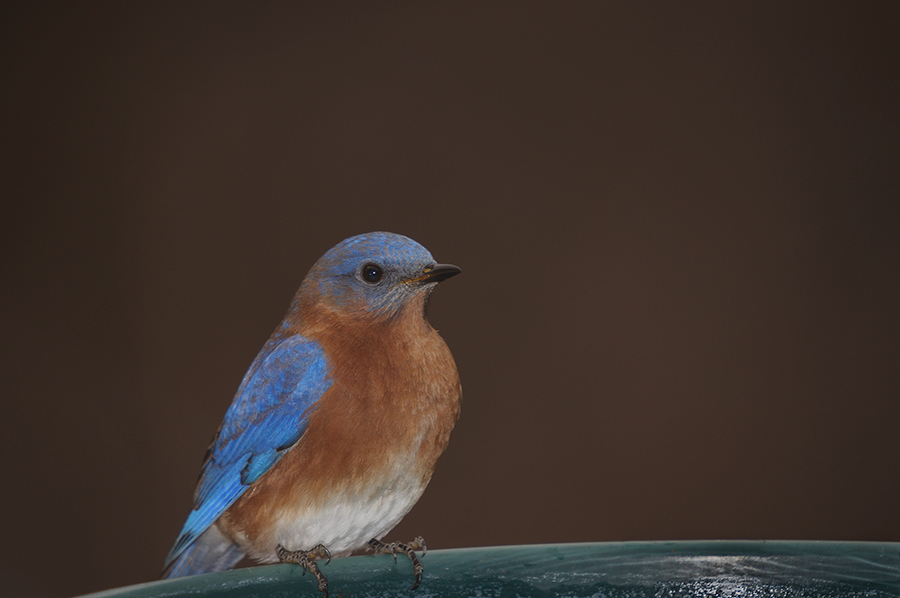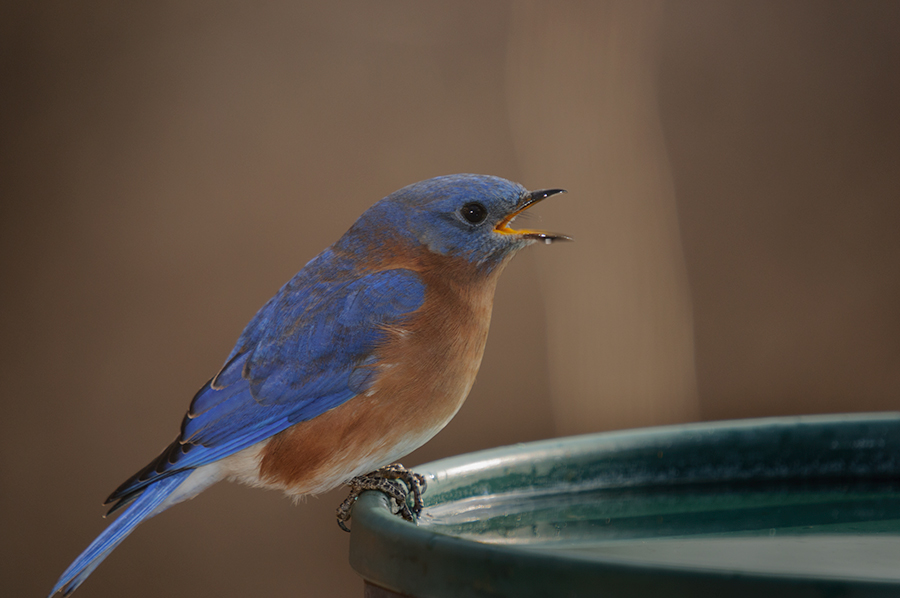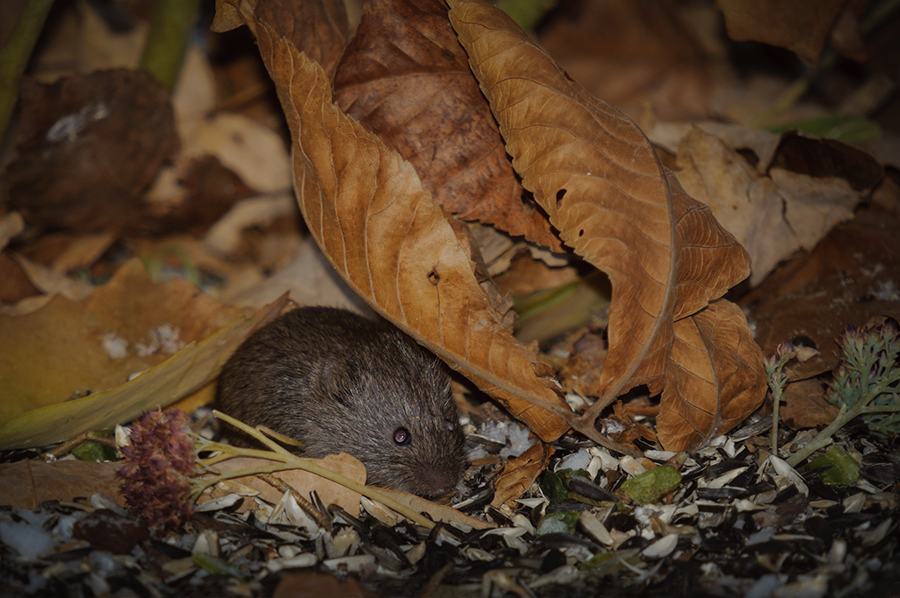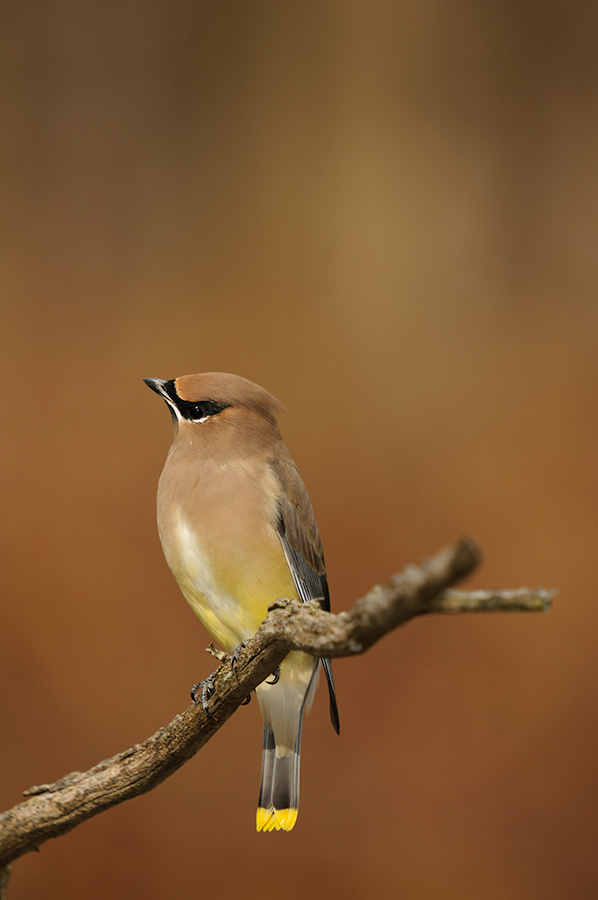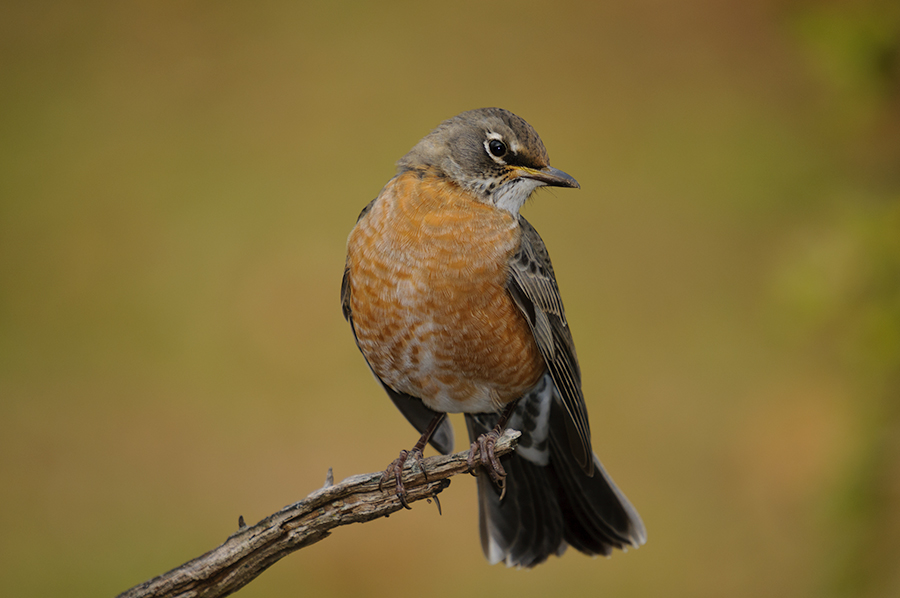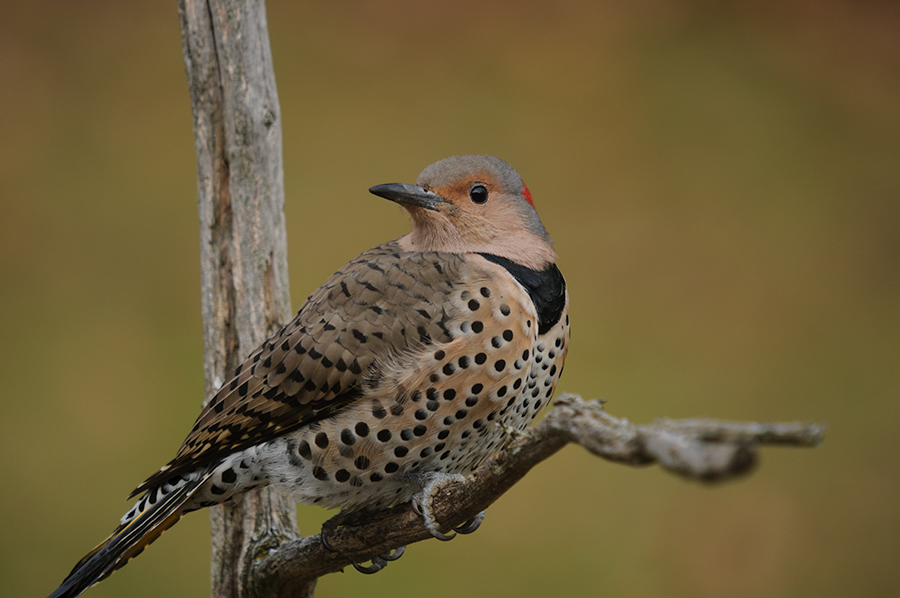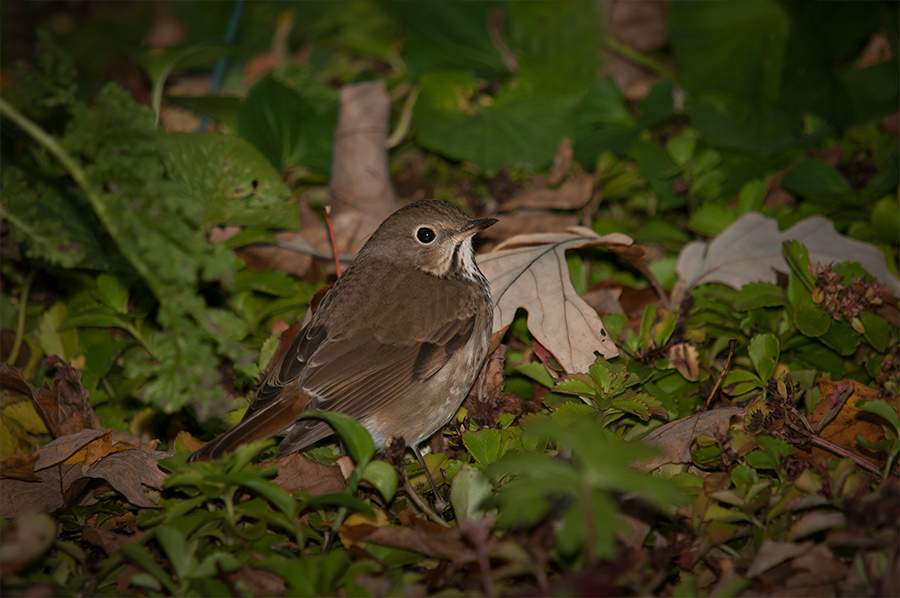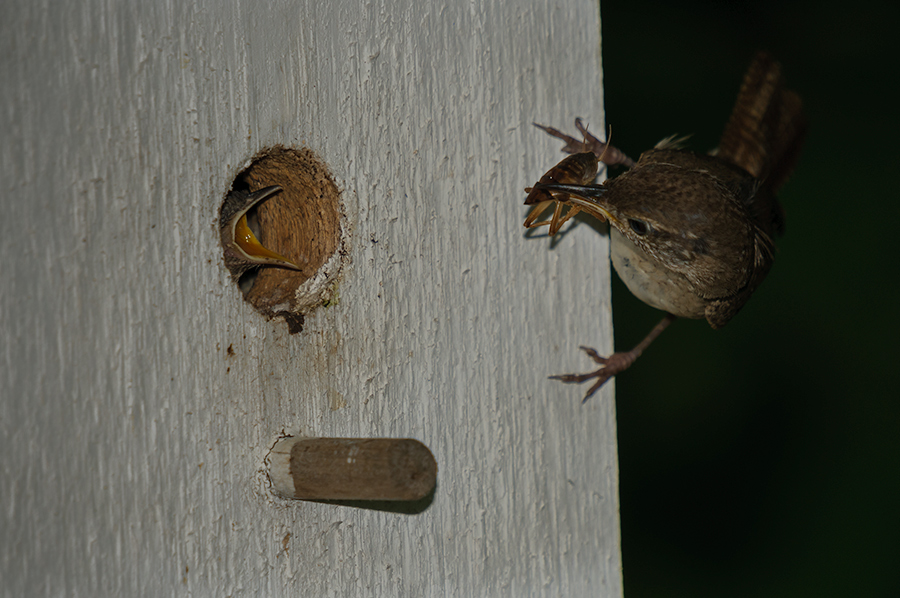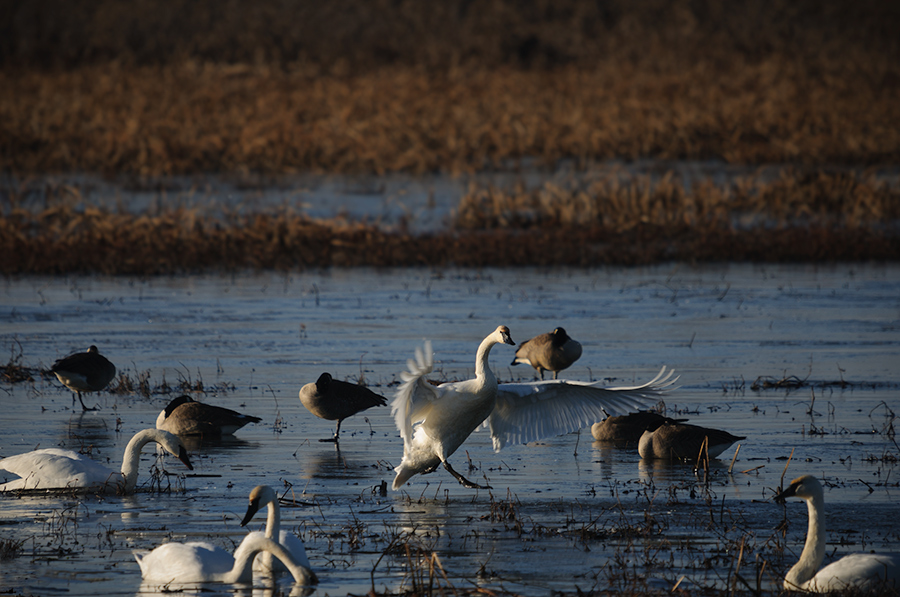
I did not want to end this year without having another visit in my favorite wildlife area here in eastern Iowa, the Green Island Wetlands. I have not been there since July and it was good to be back. It is the most quiet time of the year now after the duck hunting season is over. Due to the mild temperatures lately there was only a thin layer of ice and even spots with open water. With some patience you may see a few Bald Eagles and some hawks flying over. I could tell that I’m out of practice shooting birds in flight. It is probably a little like playing golf, if you don’t practice all the time your results suck, and my pictures of two hawks and an eagle were definitely just good for the trash can today…

The best surprise was the encounter of a “school” of 27 Trumpeter Swans. They were in company with 16 Canada Geese. These numbers are a great example of successful wildlife restoration. I remember when I wrote here in the blog about the first pair of swans that raised successfully a cygnet a few years ago. They all seemed to enjoy the sun today and I watched them for an hour and a half at the same spot.

Beside resting on the ice the swans moved slowly around and you could hear how they cracked the thin layer of ice in order to keep the water open and feed on aquatic plants.
As soon as the sun disappeared behind the hills all Trumpeter Swans got out of the water, lined up in a queue, and finally took off towards the Mississippi River. The river is not frozen over at all, although the temperature dropped quite a bit last night for the first time in weeks.
I strictly exposed for the highlights and rather let the shadows go instead of having the white feathers blown out completely or in part. I do not like the look of wildlife pictures where the shadows are overly restored like in an HDR image. A little bit is ok but too much looks unnatural to me. Unfortunately it is a trend these days to make photos look like paintings… Well, I’m glad trends come and go… ;-)
